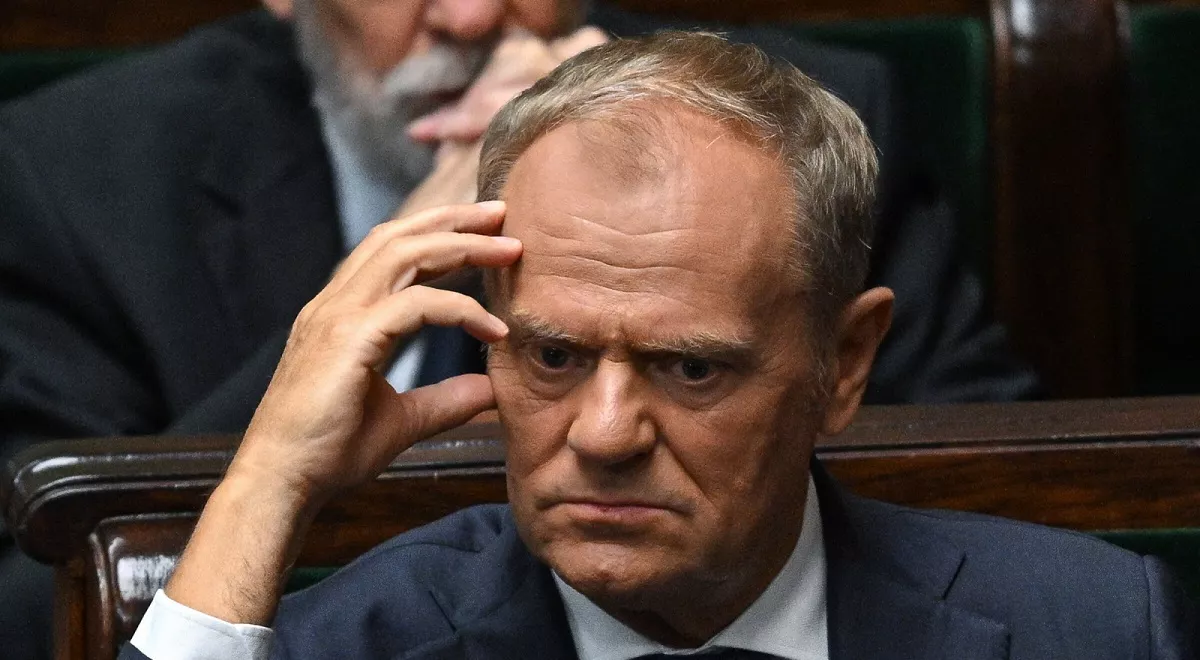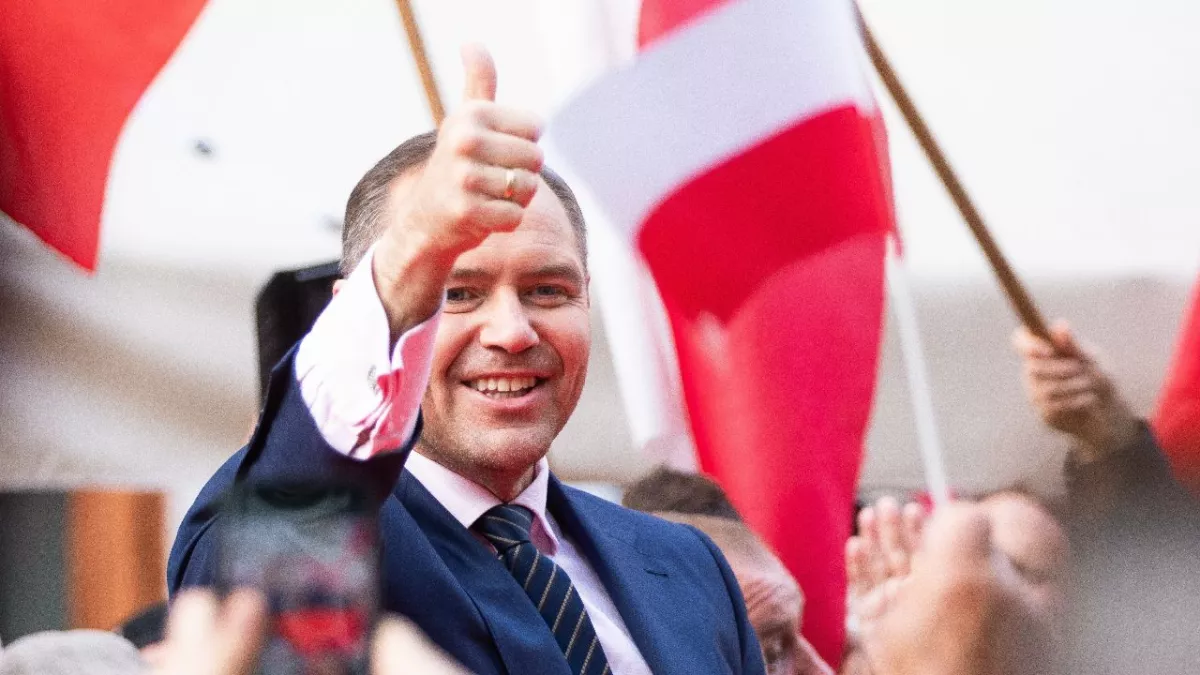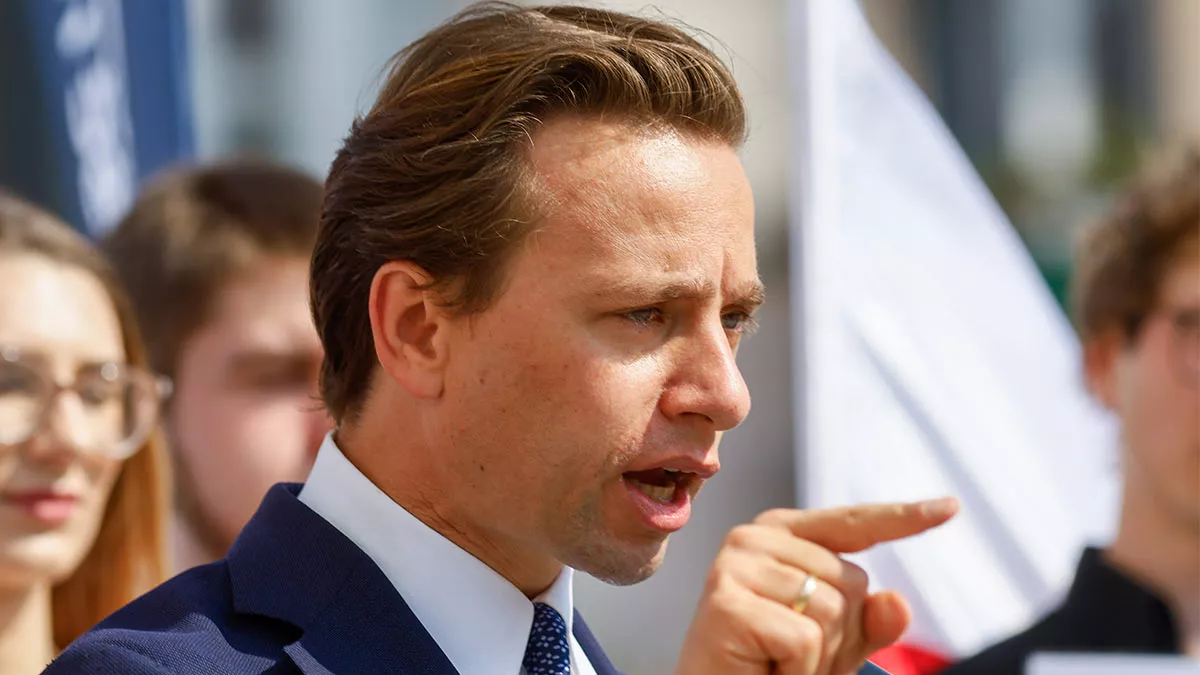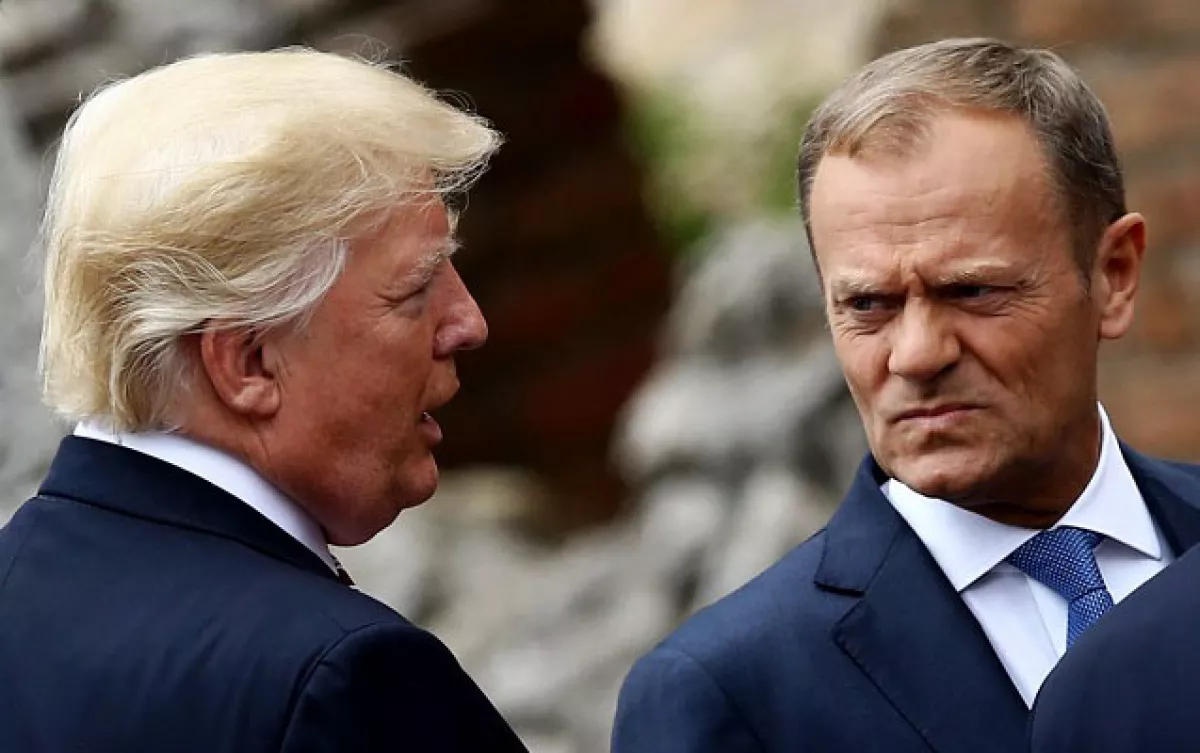Duel of Polish authorities Tusk vs Nawrocki
A serious conflict is unfolding between Polish Prime Minister Donald Tusk and the recently elected President Karol Nawrocki. Both politicians are publicly exchanging “pleasantries,” and now even the Polish intelligence services have become involved in the confrontation.
March of radicalism, the liberal PM’s countermove
On August 7, just one day after President Nawrocki assumed office, Prime Minister Tusk stated that he would be “relentless” regarding Nawrocki and his initiatives. On August 27, President Nawrocki himself sharply demanded, during a Cabinet meeting, that Prime Minister Tusk provide a report on state finances and investment progress. Tusk referred to GDP growth, while explaining problems by noting that Poland is at the limit of its budgetary capacity and is recording historically high military expenditures.

On November 7, Tusk wrote on X that the president had refused to sign a decree granting officer ranks to 126 intelligence and counterintelligence officers. As a result, the heads of the intelligence services simply did not attend the promotion ceremony—something unprecedented since 1989. Afterward, Nawrocki demanded apologies from the heads of intelligence and counterintelligence and accused the prime minister of cutting him off from the intelligence leadership, cancelling four presidential meetings with them that were crucial for state security. Karol Nawrocki even stated that Donald Tusk “is using the intelligence services for political purposes.”
Tusk, in turn, posted on his page: “This is another step in his (Nawrocki’s) war with the Polish government. Winning an election alone does not make one a president.” The president did not stay silent and responded: “To be prime minister, it's not enough to post on X.” In an interview with the channel wPolsce24, Nawrocki called Tusk “the worst prime minister in Poland’s history since 1989.”
The confrontation between the conservative and liberal segments of Polish society is increasingly visible on the streets. On Independence Day, November 11, a demonstration took place in Warsaw, traditionally led by far-right activists. In 2017, demonstrators from the National Radical Camp (ONR) carried openly racist and anti-immigrant slogans, which caused outrage in many countries. This time, amid lit flares, nationalist chants, and other far-right paraphernalia, there was also a huge banner reading: Polska dziś się upomina zwrócić Tuska do Berlina! (“Poland today asks Tusk to return to Berlin”).

The situation was made even more striking by the fact that the Polish president himself participated in the march alongside radical nationalists. Karol Nawrocki—dressed entirely in black, wearing a short zip-up jacket and leather gloves, surrounded by a large security detail—marched with a flag in hand through the smoke of flares lit by demonstrators in defiance of the governor’s ban. The police, by the way, promised to hold the violators accountable. Activists in masks also burned an EU flag, with a video of the act posted by the organisation All-Polish Youth.
In Warsaw, the column also included groups of Belarusian and Ukrainian nationalists carrying Intermarium (“Between Seas”) slogans, promoting the idea of a “Greater Commonwealth” stretching from the Baltic to the Black Sea, including Belarus and Ukraine. However, demonstrators from the Confederation of the Polish Crown and other far-right radicals chanted anti-Ukrainian slogans, bringing up the “Volhynia Massacre” and similar historical grievances.
This year, the “Independence March” in Warsaw drew up to 100,000 Polish nationalists. The German newspaper Frankfurter Allgemeine Zeitung called it “the largest regular demonstration of right-wing forces in the world.” The “March of Poles” in Wrocław was even more radical, openly displaying neo-Nazi symbols such as Celtic crosses and the number “88,” while stoking hatred toward migrants from Ukraine. The racist group White Front of Poland also took part, and the organiser of the demonstration, former priest Jacek Międlar, gave a separate acknowledgement to the neo-pagans who participated at the cathedral.
A columnist for the Polish newspaper Polityka noted: “This year’s march took place in an atmosphere of an undercurrent of civil war among the right. With the return of Donald Tusk as prime minister and Karol Nawrocki as president, the split in Polish politics has sharply deepened…”
The ruling coalition commented on the Independence Day events as follows: “The president turned a nationwide public holiday into a private political quarrel.”
The president at the head of the opposition
The complexity of Poland’s political situation lies in the fact that the coalition of the Civic Platform and other liberal and left-liberal parties holds a parliamentary majority, which underpins Tusk’s government. Meanwhile, the right-wing PiS and the far-right Confederation—even though their candidate Nawrocki won the presidential election—remain in opposition.
At the same time, certain shifts and conflicts are occurring within the right-wing camp itself. Members of the conservative Law and Justice (PiS) party complain that the Confederation is increasingly siphoning off their popularity. Forecasts suggest that in the 2027 elections, the Confederation could overtake PiS.

Speaking at the Dmowski Roundabout during the “Independence March,” the leader of the Confederation and Deputy Speaker of the Polish Sejm, Krzysztof Bosak, welcomed Nawrocki, called him “one of us,” and spoke at length about the need to protect Poles from the “migrant threat.” The far-right leader also pointed out that the main threats come from Brussels, Berlin, and Strasbourg, asserting that Poland’s fate “will no longer be decided in Washington or Moscow.”
At the same time, President Nawrocki is seeking to become the widely recognised leader of the right. Experts believe he wants to position himself at the centre of the right wing, weakening PiS and strengthening the more radical Confederation. Recently, in part to appeal to his right-wing electorate, Nawrocki even banned the Polish Communist Party.
After the “Independence March,” Prime Minister Tusk delivered an unusually sharp critique of the president. Donald Tusk called Karol Nawrocki’s participation in the march alongside the ultra-right and their “anti-European” slogans a “malicious joke.” The prime minister suggested that such behaviour by the president damages Poland’s European image and aligns with the ideology of extremist groups.
On his X page, Tusk also made a sarcastic remark, hinting at the German heritage of several far-right Polish politicians: “The fact that at the march the deputies Mentzen, Wipler, Braun and Fritz sent me off to Berlin was even amusing…”
Tusk also accuses Nawrocki of “working with Putin and his allies to destroy Europe.” For the sake of accuracy, it should be noted that the Polish president is in no way an ally of Moscow—he is simply a Polish nationalist.
Some observers also suggest that the current conflict between the president and prime minister is linked to the fact that the Polish Constitution does not grant the head of state significant powers, and those that exist are vaguely defined. Today, like Lech Wałęsa in the past, Nawrocki is likely to try to expand his authority by all possible means.
The “Independence March” coincided almost exactly with Nawrocki’s 100th day in office, and a social poll was conducted around this milestone. Notably, 39% of respondents supported keeping the president’s powers as they are, while 31% favoured expanding them. So far, 53% gave a positive assessment of the first “hundred days,” and 26% gave a negative assessment.
On November 12, the day after the march, the president rejected the appointment of 46 judges. Nawrocki announced that during his presidency, no judge challenging the powers of the president or the Polish Constitution would be appointed. He also stated that he would not promote judges who “heed the malicious provocations of Justice Minister Waldemar Żurek.” At the time, all these candidates, now disqualified, had signed OSCE appeals against “postal voting” or other protest petitions and complaints.
In response, Prime Minister Tusk said that Poland would now have to deal with a president who “plays with the Constitution.” Nevertheless, as head of the government, he insisted he would defend the rule of law. When journalists asked whether the president should be held accountable before the State Tribunal, Tusk answered in the negative.
On the other hand, the right-wing opposition accuses Prime Minister Tusk of governing through resolutions, appointing a “usurper” to the prosecution, and establishing control over state media.
Meanwhile, Nawrocki has been actively exercising his presidential veto power, blocking, in particular, laws on wind power plants and aid for refugees from Ukraine—13 out of 70 bills submitted to him for signing.

Nevertheless, the president and prime minister have resolved some issues by mutual agreement. For example, after some negotiation, the prerogative to maintain relations with Washington was given to Nawrocki. After Donald Tusk accused Donald Trump of “working for Russia,” the current White House administration has not looked on him too favourably.
So what lies behind the contradictions between the president of Poland and the head of government? First and foremost, it is a clash between the interests of national Polish business and globally oriented economic circles and politicians. Nawrocki adheres to a strongly pro-American course, while Tusk focuses on the EU and Brussels. In this context, the conservative–liberal paradigm plays a secondary role.
Overall, this dramatic “war” between the two politicians and centres of power also serves to distract ordinary Poles from social problems and the difficulties of everyday life, as well as from the threat of Poland being drawn into a major military conflict in Europe.
According to current forecasts, the confrontation between President Nawrocki and Prime Minister Tusk is expected to intensify further in the run-up to the Polish parliamentary elections in 2027.








